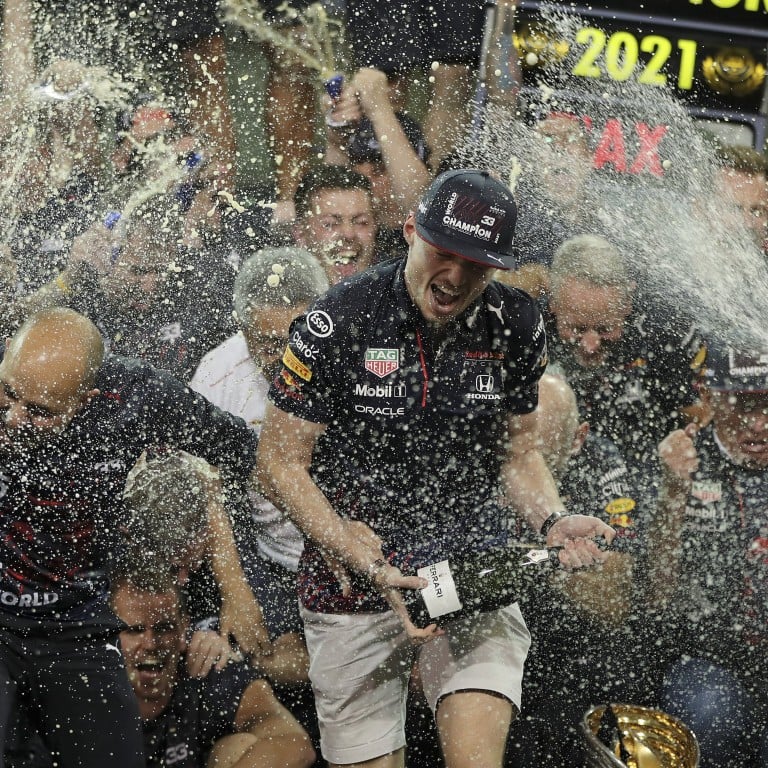The world’s most expensive sport? How the Formula 1 World Championship attracts Mercedes and Ferrari, and cities like Abu Dhabi and Singapore, to spend billions on Grand Prix races every year

- Huge brands like Red Bull, Rolex, Richard Mille, Ray-Ban, Tag Heuer, Ritz-Carlton and Hilton queue up to get their names seen on Lewis Hamilton, Max Verstappen and co.
- Besides the racing, A-list acts like Jay-Z, Red Hot Chili Peppers, Jennifer Lopez, Prince, Paul McCartney and Beyoncé are just regular after-race entertainment
As glamour-drenched sports go, Formula One has few rivals. From luxury brand sponsorships to velvet rope parties to preposterously pricey engineering – if horse racing is the sports of kings, this is the sport of bling.
“The racing itself represents the first class of everything,” says Ringo Lee Yiu-pui, president of the Hong Kong Automobile Association, the governing body for motorsport in the city. “The participants are mostly sponsored or developed by the leading enterprises of the car industry, with their best engineering teams, to build the fastest vehicles. With all these investments, not only has Formula One cultivated a luxurious image and attracted an elite crowd, but also participating in Formula One represents an elite identity.”

These cars don’t come cheap: one will set you back an absolute minimum of about US$10 million, but most teams spend a lot more than that. A budget cap introduced from the current season limits the annual spending of each team to US$145 million, dropping by US$5 million for each of the next two seasons. This, to be clear, constitutes a Formula One team being financially prudent. Before that, the spending of some teams could run to half a billion, with US$200 million and more going on engines alone.

The promoters don’t get off easily. Their hosting fee, while a closely guarded secret, is believed to be in excess of US$30 million, while the costs of staging a race can run to twice that or more. The circuits are also pretty costly: the bill for the Shanghai International Circuit, completed in 2004, came in at more than US$300 million. And the Formula One package itself comes at a hefty price, with US company Liberty Media shelling out US$4.4 billion for the series in 2017.
Sponsorship contributes almost half of the sport’s revenue – Formula One pioneered the concept of sports sponsorship back in the 1960s – and it comes from a pretty select bunch: the likes of Rolex, Ray-Ban, Vistajet, Tag Heuer, Richard Mille, Bombardier, Ritz-Carlton, Aston Martin and Hilton. It’s a natural fit for many of them: the sport itself has many of the characteristics that luxury brands either exhibit already or aspire to, including exclusivity, prestige and expense – the whiff of danger probably doesn’t hurt, either. Prices range from a few hundred thousand dollars a season to the estimated US$50 million-plus that Philip Morris pays Ferrari, in an arrangement that dates back to 1973.

The sport’s glamour is also amplified by the legendary post-event bashes at certain circuits. The Singapore Grand Prix alone, for example, has hosted the likes of The Killers, Red Hot Chili Peppers, Robbie Williams, Jennifer Lopez and Calvin Harris; while Abu Dhabi has put on Prince, Paul McCartney, Beyoncé and Guns N’ Roses.
The glammest race of all, of course, is in Monaco, and comes with prices to match. A duplex suite at the Hotel Hermitage Monte-Carlo for the three days of the 2022 race, for instance, will cost you more than US$74,000.